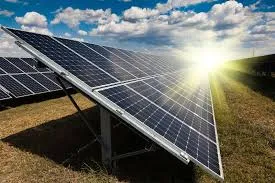high efficiency solar panels
High Efficiency Solar Panels Harnessing the Power of the Sun
The global shift towards renewable energy sources is gaining momentum, with solar energy leading the charge. Among various advancements in solar technology, high-efficiency solar panels are revolutionizing how we capture and utilize sunlight. This article explores the significance, benefits, and future of high-efficiency solar panels in our journey towards a sustainable energy future.
Understanding High-Efficiency Solar Panels
High-efficiency solar panels are designed to convert more sunlight into electricity compared to traditional solar panels. While standard solar panels typically achieve an efficiency rate of around 15-18%, high-efficiency models can reach rates of 20-25% or more. This means that a smaller surface area can generate the same amount of electricity, making them particularly beneficial in urban settings where space is limited.
The Technology Behind High Efficiency
The increased efficiency of these solar panels is often attributed to advanced photovoltaic (PV) technologies. Some of the most common types include
1. Monocrystalline Silicon Panels Made from single-crystal silicon, these panels are known for their high efficiency and long lifespan. They tend to perform better in low-light conditions and have a sleek appearance, making them a popular choice for residential installations.
2. Bifacial Solar Panels These innovative panels can capture sunlight from both sides, which can considerably increase their energy output, especially in open areas where light reflects off the ground.
3. PERC (Passivated Emitter and Rear Cell) Technology This technology enhances the performance of traditional silicon solar cells by adding a layer that reduces energy loss, thereby maximizing the amount of sunlight converted into electricity.
high efficiency solar panels

Benefits of High-Efficiency Solar Panels
1. Space Optimization High-efficiency solar panels provide the same energy output in a smaller area, making them ideal for rooftops or small installations where space is at a premium.
2. Cost-Effectiveness While the initial investment for high-efficiency panels may be higher, their ability to generate more electricity can lead to a quicker return on investment. Over time, the increased energy production can result in substantial savings on electricity bills.
3. Environmental Benefits By maximizing solar energy production, high-efficiency solar panels contribute significantly to reducing carbon footprints. Transitioning to solar energy not only mitigates the impacts of climate change but also promotes cleaner air and a healthier environment.
4. Energy Independence Utilizing high-efficiency solar panels allows homeowners and businesses to reduce their reliance on fossil fuels, contributing to energy security and independence.
Future Trends and Developments
As technology continues to evolve, high-efficiency solar panels are expected to become even more effective and affordable. Innovations such as perovskite solar cells show great promise, with potential efficiency rates exceeding traditional silicon technologies. Additionally, smart solar technologies integrated with storage solutions will enhance energy management, allowing for better utilization and distribution of solar power.
Conclusion
The advent of high-efficiency solar panels marks a significant milestone in the quest for sustainable energy solutions. With their superior ability to convert sunlight into electricity, these panels not only address the global energy crisis but also pave the way for a cleaner, greener future. As advancements in solar technology continue to unfold, adopting high-efficiency solar panels will undoubtedly play a crucial role in transforming the energy landscape and fostering a more sustainable planet for generations to come. Embracing this technology is not just a step toward energy savings, but a leap towards a healthier environment and a resilient energy future.
-
String Solar Inverter: The High-Efficiency Solution for Smart Solar EnergyNewsJul.14,2025
-
Revolutionizing Rooftop Energy with the Power of the Micro Solar InverterNewsJul.14,2025
-
Power Independence with Smart Off Grid Solar Inverter SolutionsNewsJul.14,2025
-
On Grid Solar Inverter: Powering the Future with Smart Grid IntegrationNewsJul.14,2025
-
Monocrystalline Solar Panels: High-Efficiency Power for the Future of Clean EnergyNewsJul.14,2025
-
Bifacial Solar Panel: A Smarter Investment for Next-Generation Energy SystemsNewsJul.14,2025







